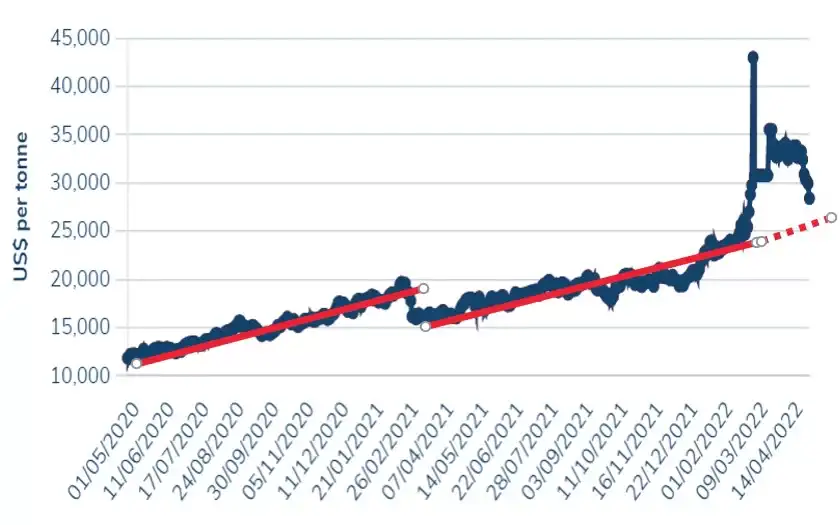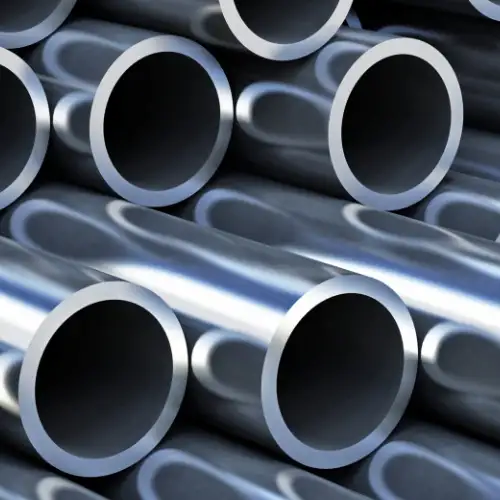A nickel alloy is a metal that contains nickel as its principal or most abundant element, combined with other elements to enhance specific properties. These additions can include chromium, iron, molybdenum, copper, and a host of others, each imparting unique characteristics to the final material. The result is a class of alloys renowned for their exceptional corrosion resistance, high-temperature strength, and special magnetic and electronic properties. We often refer to these materials as “superalloys” when they are destined for the most demanding applications, a testament to their remarkable performance under extreme conditions. Their versatility makes them indispensable in a vast array of industries, from the depths of the ocean to the far reaches of space.
What is Nickel Alloys
As seasoned professionals in the metallurgical field, we’ve spent decades working with these incredible materials. What makes them so special? In essence, it’s their sheer adaptability. By carefully controlling the alloying elements, we can tailor a nickel alloy to resist aggressive chemicals, withstand blistering heat, or exhibit unique physical properties. This isn’t just about mixing metals; it’s a precise science, a form of materials engineering that pushes the boundaries of what’s possible. Throughout this article, we will unpack the complexities of these alloys, moving from their fundamental composition to their real-world applications and market dynamics.
Common Grades and Their Distinctions
The world of nickel alloys is vast, with hundreds of specific grades developed for particular environments. However, a few stand out as the workhorses of the industry. Let’s break down some of the most frequently encountered families.
- Inconel® (Nickel-Chromium Alloys): When we talk about high-temperature strength and oxidation resistance, the Inconel series is often the first that comes to mind. Grades like Inconel 625 and 718 are staples in the aerospace and chemical processing industries. Their ability to maintain structural integrity at temperatures that would cause other metals to weaken and fail is nothing short of remarkable. The high chromium content forms a passive, protective oxide layer, effectively shielding the metal from corrosive attack.
- Monel® (Nickel-Copper Alloys): This family of alloys presents a different but equally valuable set of properties. Monel 400, for instance, exhibits outstanding resistance to corrosion by seawater and a wide range of acids and alkalis. This makes it a go-to material for marine applications, chemical processing equipment, and a variety of other demanding environments where copper-based alloys would falter. It’s a classic example of “the whole is greater than the sum of its parts,” as the combination of nickel and copper yields properties superior to either metal alone.
- Hastelloy® (Nickel-Molybdenum Alloys): When the corrosive environment is particularly aggressive, especially with reducing acids like hydrochloric and sulfuric acid, we turn to the Hastelloy family. Hastelloy C-276 is perhaps the most well-known, offering superb resistance to a wide spectrum of corrosive media, including sour gas wells and pulp and paper bleach plants. The high molybdenum and chromium content gives it this exceptional versatility.
- Nimonic® and Waspaloy® (Precipitation-Hardened Alloys): In the hottest sections of gas turbines and jet engines, you’ll find these specialized, age-hardenable superalloys. They are designed for exceptional creep resistance and high-temperature strength. The addition of elements like titanium and aluminum allows for the formation of strengthening precipitates within the metal’s crystal structure during heat treatment, a process that gives them their incredible high-temperature capabilities.

Future Global Market Analysis
The global nickel alloy market is on a trajectory of sustained growth. What’s driving this expansion? It’s a convergence of factors. The relentless push for efficiency and performance in the aerospace sector demands materials that can withstand higher operating temperatures. The ongoing global energy transition necessitates robust alloys for a variety of applications, from nuclear power generation to geothermal and solar energy systems. Furthermore, the chemical processing industry’s constant need for corrosion-resistant materials to handle increasingly aggressive substances continues to fuel demand.
According to a report by a leading market research firm, the global nickel alloys market size was valued at USD 13.9 billion in 2023 and is projected to grow at a compound annual growth rate (CAGR) of 4.1% from 2024 to 2030. This steady growth underscores the critical role these advanced materials play in modern technology and industry. The Asia-Pacific region is anticipated to witness the most significant growth, driven by its burgeoning industrial and manufacturing sectors. We are seeing a clear trend towards the development of new, specialized alloys to meet the challenges of emerging technologies. The game is constantly changing, and innovation in nickel alloy metallurgy is at the forefront.
Applications
It’s one thing to discuss the properties of nickel alloys in the abstract; it’s another to see where they make a tangible impact. Their applications are as diverse as they are critical.
- Aerospace: This is arguably the most demanding arena for nickel alloys. They are essential for jet engine components like turbine blades, discs, and combustion chambers, where they must endure extreme temperatures and mechanical stress. The push for more fuel-efficient engines with higher thrust-to-weight ratios is inextricably linked to advancements in nickel superalloy technology.
- Chemical and Petrochemical Processing: In this sector, corrosion is the ever-present enemy. Nickel alloys are used to construct reactors, heat exchangers, piping, and valves that handle highly corrosive chemicals, acids, and high-pressure steam. Their longevity in these harsh environments prevents costly downtime and enhances operational safety.
- Oil and Gas Exploration: The extraction of oil and gas, particularly from deep, sour wells, presents a formidable challenge. The combination of high temperatures, high pressures, and corrosive compounds like hydrogen sulfide requires materials of exceptional durability. Nickel alloys are the material of choice for downhole tubing, wellhead components, and processing equipment.
- Marine Engineering: Seawater is notoriously corrosive to most metals. Nickel-copper alloys like Monel 400 are extensively used for propeller shafts, pump components, and saltwater piping systems, offering long-term reliability in marine environments.
- Power Generation: From the steam generator tubing in nuclear power plants to components in industrial gas turbines, nickel alloys play a vital role. Their ability to withstand high temperatures and pressures while resisting corrosion is paramount for safe and efficient power generation. A study published by the U.S. Department of Energy highlights the importance of advanced alloys in enabling higher efficiency in next-generation power plants.
Specifications at a Glance
When we specify nickel alloys for a project, we rely on a standardized system to ensure we’re getting the exact material we need. These specifications, often governed by organizations like ASTM (American Society for Testing and Materials) and AMS (Aerospace Material Specifications), dictate the alloy’s composition, form (e.g., plate, bar, sheet), and required properties.
| Specification | Form | Common Alloys Covered | Industry Focus |
| ASTM B162 | Plate, Sheet, Strip | Nickel (e.g., Alloy 200) | General Industrial |
| ASTM B166 | Rod, Bar, Wire | Inconel 600, 601, 625 | Chemical, Aerospace |
| ASTM B443 | Plate, Sheet, Strip | Hastelloy C-276, C-22 | Chemical Processing |
| AMS 5540 | Sheet, Strip, Plate | Inconel 718 | Aerospace |
| AMS 5662 | Bars, Forgings, Rings | Inconel 718 | Aerospace |
Chemical Composition
The precise chemical composition of a nickel alloy is the foundation of its performance. Even small variations in the percentage of alloying elements can have a profound impact on its properties. The table below illustrates the nominal chemical compositions of several common nickel alloys. Notice the high nickel content, which forms the matrix, and the strategic additions of other elements to achieve desired characteristics.
| Alloy | Ni (%) | Cr (%) | Mo (%) | Fe (%) | Cu (%) | Co (%) | Other Elements |
| Alloy 200 | 99.2 min | – | – | 0.4 max | 0.25 max | – | C, Mn, Si |
| Monel 400 | 63.0 min | – | – | 2.5 max | 28-34 | – | Mn, Si |
| Inconel 625 | 58.0 min | 20-23 | 8-10 | 5.0 max | – | 1.0 max | Nb 3.15-4.15 |
| Hastelloy C-276 | Balance | 14.5-16.5 | 15-17 | 4-7 | – | 2.5 max | W 3.0-4.5 |
| Inconel 718 | 50-55 | 17-21 | 2.8-3.3 | Balance | – | 1.0 max | Nb 4.75-5.5, Ti 0.65-1.15, Al 0.2-0.8 |
Mechanical Properties
Beyond chemical resistance, the mechanical properties of nickel alloys are what allow them to function under significant physical stress. These properties are often determined in both room temperature and elevated temperature conditions to simulate their service environments.
| Alloy (Annealed Condition) | Tensile Strength (ksi) | Yield Strength (ksi) | Elongation (%) | Hardness (Rockwell B) |
| Alloy 200 | 67 | 21.5 | 47 | 62 |
| Monel 400 | 80 | 35 | 40 | 75 |
| Inconel 625 | 135 | 75 | 45 | 96 |
| Hastelloy C-276 | 115 | 52 | 55 | 90 |
| Inconel 718 (Aged) | 210 | 185 | 15 | C44 (Rockwell C) |
Note: These are typical values and can vary based on heat treatment and specific processing.
Nickel Alloys vs. Other Contenders
How do nickel alloys stack up against other common engineering materials like stainless steel and titanium alloys? It’s a matter of choosing the right tool for the job.
| Feature | Nickel Alloys | Stainless Steels (e.g., 316) | Titanium Alloys (e.g., Ti-6Al-4V) |
| Corrosion Resistance | Superior, especially in harsh chemical and high-temp environments. | Good general corrosion resistance, but susceptible to chlorides. | Excellent, particularly in oxidizing and chloride-containing media. |
| High-Temp Strength | Excellent, maintains strength at very high temperatures. | Good up to moderate temperatures, but weakens significantly above 600°C. | Good, but generally lower than nickel superalloys at the highest temperatures. |
| Cost | High | Moderate | High |
| Density | High (e.g., ~8.4 g/cm³) | Moderate (~8.0 g/cm³) | Low (~4.4 g/cm³) |
| Fabricability | Can be challenging to machine and weld. | Generally good. | Can be difficult to machine and weld. |
In short, while stainless steel is a fantastic, cost-effective choice for many applications, it simply cannot perform in the extreme temperature and corrosive environments where nickel alloys excel. Titanium alloys offer a compelling strength-to-weight ratio, making them ideal for aerospace structural components, but nickel alloys often have the edge in the hottest parts of the engine.
Nickel Price Comparison (USD per tonne)
| Region | Latest Price (approx.) | Q1–Q2 2025 Average |
|---|---|---|
| China | ~$15,143 (LME spot, 11 Jul) | ~$17,880 in March (domestic spot) |
| USA | ~$14,955 (industrial spot, 11 Jul) | ~$21,890 in H2‑2023 to Q1‑2025 average ~$21,890 |
| Europe | Spot FD: $16,267 in March | $15,611–16,267 range Q1‑2025 |
| India | ₹1,340/kg ≈ $1,340 × 1,000 ÷ 85.8 ≈ $15,620/t (13 July) | $15,757 → $16,363 in Q1‑2025 |
🔍 Regional Breakdown
China
-
LME nickel spot $15,143/t on July 11, 2025.
-
Domestic Chinese nickel average around $17,880/MT in March 2025.
United States
-
Industrial nickel price ~$14,955/t as of July 11, 2025 .
-
But average cost was higher (≈ $21,890/MT) covering LME and domestic markets in late 2023–early 2025 .
Europe
-
Spot FD price rose from $15,611/MT in January to $16,267/MT in March 2025.
-
Typical range Q1 2025: $15.6k–16.3k/t .
India
-
₹1,340/kg on July 13, 2025 ≈ $15,620/t .
-
Q1 2025 average climbed from $15,757 → $16,363/t .
🧭 Insights & Summary
-
Cheapest spot price: US industrial (
$14.96k/t) & LME spot China ($15.14k/t). -
Mid‑range: India (
$15.6k/t) and Europe ($15.6–16.3k/t). -
Highest average: China’s domestic spot (
$17.9k/t) and US broader average ($21.9k/t).
⚠️ Notes & Clarifications
-
Spot vs average: Latest spot prices reflect real-time market rates; Q1/Q2 averages show longer-term trends.
-
Currency conversion: Used USD/INR ≈ ₹85.8 and USD/tonne for consistency.
-
Price definitions vary:
-
China/US/Europe data from LME, industrial spot, and domestic reports.
-
India is MCX-derived for pure nickel (99.8%). Alloy-specific prices vary higher.
-
| Alloy Family | Relative Price Index (Approximate) | Key Price Drivers |
| Nickel-Copper (Monel) | Medium | Nickel, Copper commodity prices |
| Nickel-Chromium (Inconel) | High | Nickel, Chromium, Niobium commodity prices |
| Nickel-Molybdenum (Hastelloy) | Very High | Nickel, Molybdenum, Tungsten prices; complex processing |
| Precipitation Hardened | Highest | Multiple expensive alloying elements (Co, Nb, Ti), multi-stage heat treatment |
This table provides a relative comparison. Actual prices fluctuate daily.
We always advise our clients that focusing solely on the initial purchase price can be a classic case of “penny wise, pound foolish.” The total cost of ownership, which factors in longevity, reliability, and the prevention of catastrophic failure, often justifies the premium investment in a high-performance nickel alloy.
A Guide to Selecting the Right Alloy
Choosing the correct nickel alloy from the myriad of available grades can seem daunting. What’s the secret? It boils down to a systematic evaluation of the service environment. We always start by asking a series of critical questions:
- What is the primary function of the component? Is it structural, for containment, or something else?
- What is the operating temperature? Will it be constant or cyclical?
- What specific corrosive media will be present? We need to know the chemicals, their concentrations, and whether they are oxidizing or reducing.
- What are the mechanical demands? What levels of stress, pressure, and potential for fatigue will the component experience?
- What is the project budget? This helps to narrow down the options to the most cost-effective solution that still meets all technical requirements.
Answering these questions honestly and thoroughly is the cornerstone of successful material selection. Getting it wrong can lead to premature failure, costly downtime, and potential safety hazards.
Why choose MWalloys
At MWalloys, we specialize in the supply of premium-quality alloy products tailored to the most demanding industrial applications. With a commitment to excellence and a deep understanding of metallurgical science, our alloys offer:
-
Exceptional performance – Combining corrosion resistance, high-temperature strength, and mechanical robustness, our materials are engineered for longevity and reliability in extreme conditions.
-
Diverse alloy portfolio – From nickel‑based superalloys to specialized stainless and custom-engineered grades, we stock a wide range of material forms (bar, rod, sheet, wire), ensuring you get the right alloy in the right form when you need it.
-
Unmatched supply chain support – With strategically located inventory and JIT delivery programs, we guarantee prompt fulfillment and minimize lead times, strengthening your operational efficiency.
-
Technical expertise & traceability – Our team of alloy specialists and welding engineers ensures you receive not only the appropriate grade but also full traceability, certifications, and metallurgical guidance for optimal use.
-
Quality-driven ethos – Upholding rigorous quality standards (ISO certifications, ASTM, ASME, AWS compliance), we deliver consistent, reliable materials you can trust for critical applications.
MWalloys is dedicated to empowering your success by delivering advanced alloy solutions, tailored service, and technical partnership. Let us redefine your expectations for alloy performance and supply chain excellence.

Frequently Asked Questions (FAQ)
1. Are nickel alloys magnetic?
It depends on the specific alloy. Pure nickel is magnetic at room temperature. Alloys like Monel 400, a nickel-copper alloy, are generally non-magnetic. However, some nickel-iron alloys are specifically designed for their soft magnetic properties. Many of the high-performance nickel-chromium alloys like Inconel 625 are non-magnetic. It’s crucial to check the specifications for the particular grade in question.
2. What is the difference between an alloy and a superalloy?
While all superalloys are alloys, not all alloys are superalloys. The term “superalloy” is generally reserved for high-performance alloys, predominantly nickel-based, cobalt-based, or nickel-iron-based, that exhibit excellent mechanical strength, resistance to thermal creep deformation, good surface stability, and high corrosion and oxidation resistance. They are the elite class of alloys designed for service at temperatures above 540°C (1000°F).
3. How do you weld nickel alloys?
Welding nickel alloys requires specialized procedures and skilled personnel. These materials typically have lower thermal conductivity and higher thermal expansion than carbon steels, which must be managed to prevent distortion and cracking. Using the correct filler metal, which is often a matching or even more highly alloyed composition, is critical. Techniques like Gas Tungsten Arc Welding (GTAW or TIG) and Gas Metal Arc Welding (GMAW or MIG) are commonly used. Post-weld heat treatment may also be necessary for certain alloys to restore optimal properties.
4. What does “precipitation hardening” mean?
Precipitation hardening, also known as age hardening, is a heat treatment technique used to increase the yield strength of malleable materials. For nickel alloys like Inconel 718, it involves heating the alloy to a specific temperature to dissolve certain elements (like titanium and aluminum) into the nickel matrix (solution treating) and then holding it at a lower temperature for an extended period (aging). This causes fine particles of intermetallic compounds (precipitates) to form within the metal’s grain structure, which act as obstacles to dislocation movement, thereby significantly strengthening the alloy.
5. Why are nickel alloys so expensive?
Several factors contribute to the high cost of nickel alloys. First, the primary alloying elements—nickel, chromium, molybdenum, niobium, etc.—are often expensive commodities with volatile market prices. Second, the manufacturing process is complex and energy-intensive, often requiring vacuum melting techniques to achieve the required purity and homogeneity. Finally, the extensive testing and quality control required to certify these materials for critical applications, particularly in the aerospace and nuclear industries, add to the overall cost.
6. Is there a downside to using nickel alloys?
The primary downsides are cost and fabricability. As discussed, they are significantly more expensive than common steels. Machining them can also be challenging due to their high strength and tendency to work-harden. This means slower machining speeds, specialized tooling, and higher manufacturing costs. Their high density can also be a disadvantage in applications where weight is the most critical factor.

